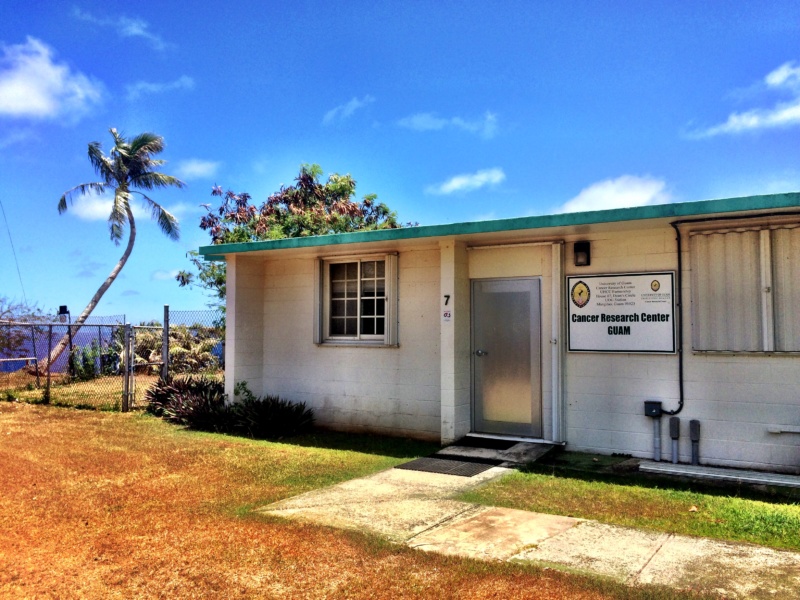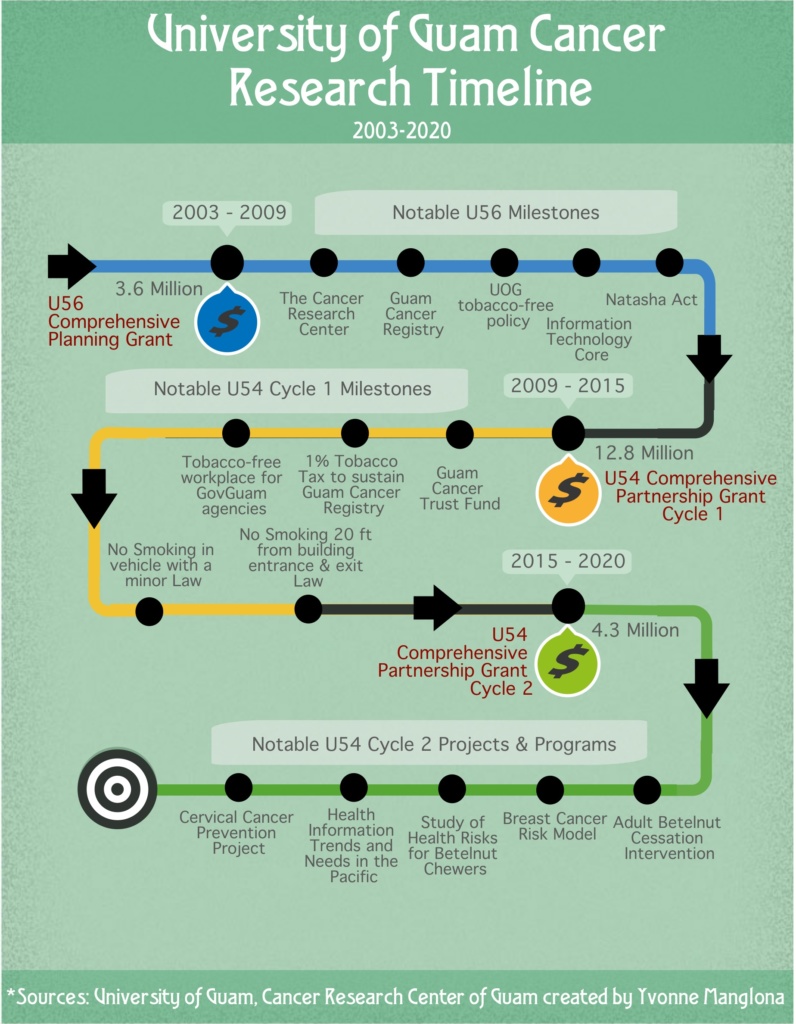[supsystic-slider id=12 position=”center”]
The University of Guam was awarded a $4.3 million cancer research grant from the National Institutes of Health to last until 2020. This third award is part of a grant partnership between UOG and the University of Hawaii Cancer Center.
In 2003, UOG received $3.6 million for a comprehensive planning grant known as the U56, partnered with the University of Hawaii Cancer Center. Then in 2009, UOG received an additional $12.8 million for the first grant cycle of the U54, a comprehensive partnership grant with UHCC.
However, the University of Hawaii Cancer Center has been financially struggling over the past several years due to frivolous overspending by former director, Michele Carbone. According to the Hawaii Independent, on Feb. 3, 2015, “The fiscal solvency of UHCC was also severely impacted by the loss of senior faculty over the past four years along with their extramural funding. Recovering from these losses is a major obstacle to the future success of the Center.”
UHCC’s financial plight over the years begs the question about whether or not the partnership with the UOG cancer research program has been jeopardized.
Despite the UHCC controversy, the recent U54 cancer research grant award suggests UOG and UHCC continue to meet their objectives in cancer research and prevention on Guam and Hawaii.
UOG’s primary investigator, Rachael Leon Guerrero, Ph.D., stated that one of the big things the U56 did was create the tumor registry.
“The function of a tumor registry states that here on the island we need to collect cancer data and report it out so that we have an idea of the actual rate of cancer on Guam,” said Leon Guerrero. “We also did a lot of outreach advocating for public policy, so the Natasha Act, the no smoking, that was our group that really pushed for that and we were the first Gov Guam agency to institute a no smoking policy on campus and it was because of the cancer grant.”
Renata Bordallo is the Guam Cancer Registry data collection specialist supervisor. When asked if any of our funds were mismanaged by UHCC’s former director, Michele Carbone, she stated, “As far as I know, the University of Guam has its own funding and then UH has its own funding even with the partnership grant from the National Institutes of Health.”
But one of challenges the Guam Cancer Registry is faced with is having a small staff of only three people tasked with a heavy load of cancer registry mandates.
However, the partnership between UOG and UHCC does experience their own set of challenges.
“Because our project involves a partnership with the University of Hawaii Cancer Center, communication and scheduled project tasks made between Guam and Hawaii prove to be challenging. Scheduled Zoom teleconference meetings are norm for U54,” said recent UOG graduate, Jiana Salas, who is now a UOG Cancer research associate.
Salas is currently working on two projects with U54; Pilot Project I: “Reducing Cervical Cancer Screening Health Disparities Among Pacific Islanders Living in Guam and Hawaii” and Community Outreach Core.
When asked if the grant was effective in helping to prevent cervical cancer, Salas agreed that the grant is effective in helping to prevent cervical cancer.
“Our project is an intervention to increase cervical cancer screening that could help decrease cervical cancer rates. We are funded under the Comprehensive Partnerships to Advance Cancer Health Equity (CPACHE). Health equity means efforts to ensure that all people have full and equal access to opportunities that enable them to lead healthy lives,” said Salas. “We try and promote health equity by building up our island neighbors who have migrated to Guam and Hawaii from Chuuk or the Marshall Islands. We will be conducting an SMS intervention to help promote cervical cancer screening and education – health topics that often go unspoken – in women of these communities.”
Leon Guerrero added that their role is to do research, find answers, provide information to the public and to Public Health, and to help shape policy.
But have policies like the Natasha Act impacted or reduced the number of lung cancer incidents?
“It would be too soon to tell because here we are analyzing cancer in five-year groups, even nationally they report it in two years and by the time they come out with official stats, already two years have gone by. Whether there has been any change, that’s the hard part about studying cancer because certain cancers develop faster than others. Lung cancer is usually diagnosed late stage, unfortunately,” said Bordallo.
One of the initiatives of the U54 cancer research grant also includes a betelnut cessation project and curriculum.
“We can’t force people to stop chewing betelnut. We can just do the research that shows that it’s carcinogenic and here is a program we found that works to help people stop,” Leon Guerrero said. “What we’re doing is finding information that helps to inform the public and inform public policy and we hope that people follow that advice. But it might take a couple years for that to trickle down and for people to actually take heed of the message.”
Bordallo also said one of the most important initiatives is the Non-communicable Disease (NCD) initiative.
“In fact, the Pacific Island Region has declared a state of emergency for NCDs, our people are dying at younger ages because of NCDs. That’s caused by obesity, drinking alcohol and other drugs, smoking cigarettes, etc.. The good thing about the NCD consortium is that group is going after the risk factors,” Bordallo said.
According to the Guam Cancer Facts and Figures from 2008-2012, on average, on Guam one person is diagnosed with cancer each day, and one person dies of cancer every two and a half days.
“A lot of the cancers are lifestyle related. Liver cancer is a huge health problem here on Guam. Liver cancer is related to drinking. Lung cancer is related to smoking and second-hand smoking. Breast cancer and colon cancer are related to a myriad of lifestyle factors. It’s not just a one-time shot, it’s over years so you try to impact kids so that you reduce their risk of developing those types of cancers along the line,” Leon Guerrero said.


